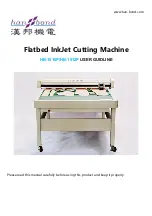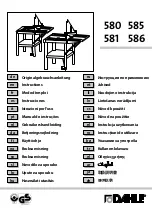
6.1.13 To install the starter
The starter pawls must come into the correct position
against the starter pulley sleeve.
1. Pull out the rope approximately 0.5 m.
2. Keep this position and set the starter against the
product.
3. Slowly release the rope until the starter pawls come
into the correct position.
4. Tighten the 4 screws on the starter to a torque of 7–
9 Nm.
6.2 Ignition system
6.2.1 Function
The ignition system has no moving parts and it is not
sensitive to moisture and dirt.
It is not necessary to adjust the ignition point.
The product has an overspeed protection rev limiter.
The limit is 9300 rpm.
The ignition system has a primary coil (1) and a
secondary coil (2). They are wound around an iron core
(3). An electronic digital unit (4) controls the switch
function.
The voltage sequence is in the diagram in the
illustration. The dotted line shows the voltage if the
current is not broken.
Current moves through the coil by the permanent
magnet on the flywheel. The electronic digital unit
senses the voltage in the primary coil. It breaks the
current before the piston is at the high turning point.
Until this point, the primary coil is in a closed circuit.
With an open circuit the current stops flowing and
voltage increases from 5V (Volt) to approximately 200V.
The primary and secondary coil work as a step-up
transformer. The secondary coil increases the voltage to
20 000V. This causes a spark.
+
-
0
S
N
S
N
V
1
1
2
2
3
3
4
6.2.2 Ignition unit
The ignition unit is sealed and cannot be repaired. The
spark plug cable, the contact unit to the spark plug and
the seal on the ignition unit can be replaced.
1
2
1. Stop switch
2. OilGuard
6.2.3 To examine the ignition system
Examine the ignition system first if the engine does not
start.
701 - 002 -
Repair and servicing - 27
















































